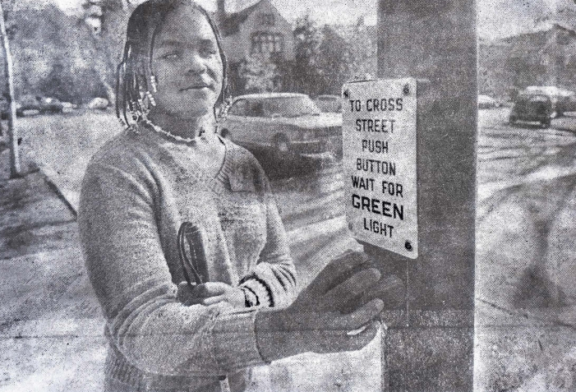 A protest organized by the School for the Blind Employee Council refuse to move to a “cauliflower field” with remarks on the rural Fremont, California site not being adequate to support their disability needs. Berkeley provides the most culturally acceptable and sensory specified environment that provides a blind individual the freedom to live independently. Moving the blind school to Fremont could be classified as a violation of Public Law 94-142. The law states all disabled children must be educated in the least restrictive environment. For the 107 blind students, with ages ranging 4-21, that lived on the Berkeley campus and dedicated much of their lives memoizing the town, must now learn how to navigate a low sensitized community. Mobility instructors feared the worst for blind students, Fremont was a sprawled environment without texture or incline to help indicate environmental changes for the blind individual.
A protest organized by the School for the Blind Employee Council refuse to move to a “cauliflower field” with remarks on the rural Fremont, California site not being adequate to support their disability needs. Berkeley provides the most culturally acceptable and sensory specified environment that provides a blind individual the freedom to live independently. Moving the blind school to Fremont could be classified as a violation of Public Law 94-142. The law states all disabled children must be educated in the least restrictive environment. For the 107 blind students, with ages ranging 4-21, that lived on the Berkeley campus and dedicated much of their lives memoizing the town, must now learn how to navigate a low sensitized community. Mobility instructors feared the worst for blind students, Fremont was a sprawled environment without texture or incline to help indicate environmental changes for the blind individual.

With 2% of Berkeley’s population disabled, and the home of the Disability Rights Movement, Berkeley has become a cultural epicenter for disability rights. With the first city to provide curb cuts in the United States, mobility and acceptance in Berkeley was a blessing to many of the disabled population. Without the deaf and blind institution, Berkeley loses not only the culture of the disabled community, but also a large purpose of why the disability movement in Berkeley became monumental.
